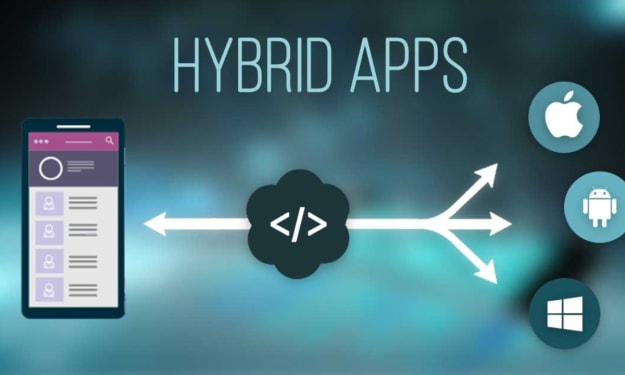20 Places to Insert Keyword in Your Website
By Brandsandu.com

Search engine optimization (SEO) performance is critical to the success of many websites, and how you use your keywords is a major factor contributing to that success. It becomes even more important if you rely solely on organic search results to drive traffic to your website, rather than paid advertising.
While there are many places where you can use your keywords, as you design a website and write content, you don’t want to make overloading everywhere available. Whenever you create content for your website, you should point to a keyword. Keyword, or keyword phrase, is what you expect your targeted users to use as a search term in search engines. Keywords tell search engines what the title of your web page is. Therefore, keyword use is a fundamental part of search engine optimization (SEO). There are many places you can enter keywords. Here are twenty places you need to enter keywords on your website pages.
The meta title is a very important place to add your keyword phrases to HTML, and it is the first step you need to take in how to enter keywords on an SEO website. The meta title acts as the web page name tag and is the first page in the search engine results page that the user will click on. Therefore, search engines such as Google, Yahoo, and Bing put a lot of SEO into this HTML meta field. To find a value greater than the meta title, it is important to put your keywords at the beginning of this field; not towards the end. The position is very important here. The closer your keywords are at the beginning of the meta title, the more likely it is that search engines can be found.
Another important place to place keywords in the meta description tag. In the description, you can use multiple roles, in which you can creatively combine keywords to describe your content. Try to include keywords at the beginning of the description, because sometimes search engines won’t display the complete description, but get it from other parts of the content.
Major search engines no longer use meta-keyword tags, but many on-page SEO plugins still include them. Google completely ignores keyword meta tags, and most SEOs leave this field blank. However, some search engines can provide some value for it, so you can choose to enter keywords here as needed.
The title tag is one of the essential locations to feature keywords. This is the first place for search engine crawlers to scan. Keyword entry is also important for title tags because this is what searchers see in their web browsers when they search. It tells them what the content is about. Google pays close attention to the page title, and if your keyword is present, it will have a profound effect on your web page. It’s important to make sure your phrase is at the beginning of the topic, not at the end-position issues.
Adding keywords or key phrases in the URL enables search engines to know what the content is about. When appending to the URL, the keywords must be concise and relevant. The use of descriptive terms, as well as the files and folders in the directory, follow the keywords in the URL. Therefore, be sure to include your keywords here.
It is natural to have keywords in the body text. If you target your audience correctly, keywords should be placed neatly in the text and not forced into the body of the text to get more searches. Sticking with two or three keywords will fit each page. If you happen to get into a lot of it, it is embedded in the text naturally, and maybe you will find out how to enter keywords on Google sites. Keywords must be in the context of use. It will determine the relevance and quality of content on the site.
It is another place where you can put keywords. Search engines use the keywords used in the link to determine the strength of the link. Using classified keywords can help you understand the relevance of links. This is about associating content with relevant keywords.
The images play a major role in creating curiosity among the audience, as “a picture speaks a thousand words.” You will find that you will be able to transfer more using imagery, as many people claim to support their search on images. Related images related to the text on the page can be ready to find the right amount of interest. Write the image correctly and use keywords on the alt-tab to help image SEO.
Heading tag, the main or H1 title tag should only appear once on the page, and it should be at the top. You must include the keyword phrase at the beginning.
You can include one or more H2 tags (or H3, H4, H5, and H6) as subtitles. Although they usually have different formats, Google treats them the same. Title tags can also help break up blocks of text, making them easier to navigate, and easier to browse or read.
Keywords can also be added in the footer. They contain links to navigation and links to internal pages. Use your keywords and help compress your SEO.
Every website usually has a banner image, where you can use important keywords to attract the attention of visitors and immediately convey the content of your website. Just keep it short and concise and convey your message.
We all use embedded content on our website. Pictures, videos, etc. Name them using the right keywords so that you not only have content that engages readers but also helps search engines, and of course, you can avoid overusing keywords.
To give more clarity to the image, Captions are often used. You can enter relevant keywords in the captions to better understand the image and the text that follows the image to make the content interesting to readers and help with SEO.
If you have links to relevant sites or pages from your website, you can use them to enter your keywords. Search engines use this to understand their value and to contribute to your site’s ranking when they link to pages or sites with a high DA.
Another common navigation tool for websites, breadcrumbs can help people identify where they are on your website, and how they can get back to where they used to be. Like any place you have words on your website, your breadcrumbs are another opportunity to enter your keywords. Just make sure the breadcrumb links provide enough information about what the pages are, without being too far away — at least 1 to 3 words.
As with alternative text, the file names of files embedded in your website must contain keywords, although no one may see them. Do not use the default name, such as DSC00055.jpg or video_07.mov. Optimize file names like URLs-use keywords at the beginning of the file name. Descriptive but concise. There is no word count or character count, but the longer the file name is, the lower the impact of keywords. However, be sure to include enough details so that someone can reasonably understand what the file contains. Typing too many keywords in your file name can hurt your SEO.
Use your brand or company name as your domain name. If you need to resolve the ambiguity of the brand name, only then use specific keywords.
The <div> tag is a piece of HTML code used to define a department or section in an HTML document. It is also a container for HTML elements designed with CSS or manipulated with JavaScript. The most common way to use the <div> tag is to add CSS classes or id attributes to it. However, it can also be used to add keywords in website HTML. For example, if you add a <div> to the page that contains the target keyword, the method is as follows: <div class = “keyword-phrase”> <div id = “keyword-phrase”>.
Your navigation menu is another place on the website to add keywords. It is a type of SEO that is not normally used to improve your website’s ranking. Using descriptive anchor text in the global navigation menu means that every page on your website has keyword-rich links to those pages. Internal links, which can send a signal to Google that the page is an important part of your site’s content. More links equal higher SEO value.
None of the above factors affect the effort of an individual SEO. Search engines consider more than 200 factors when ranking a website in search results. However, putting your keywords in the right place provides solid evidence of how your page relates to a particular topic and is important to search engines. Additionally, if you do not use keywords in high-risk locations such as domains and meta tags, which will reinforce the legitimacy of your website. The combination of the two can improve your website’s search ranking and organic traffic.
About the Creator
Brandsandu
Brandsandu Is A Complete 360 ° Branding & Digital Marketing Company In Delhi & Ncr Providing A Complete Solution From Branding To Social Media, From Public Relations To Media Buying To Interactive Solutions.






Comments
There are no comments for this story
Be the first to respond and start the conversation.